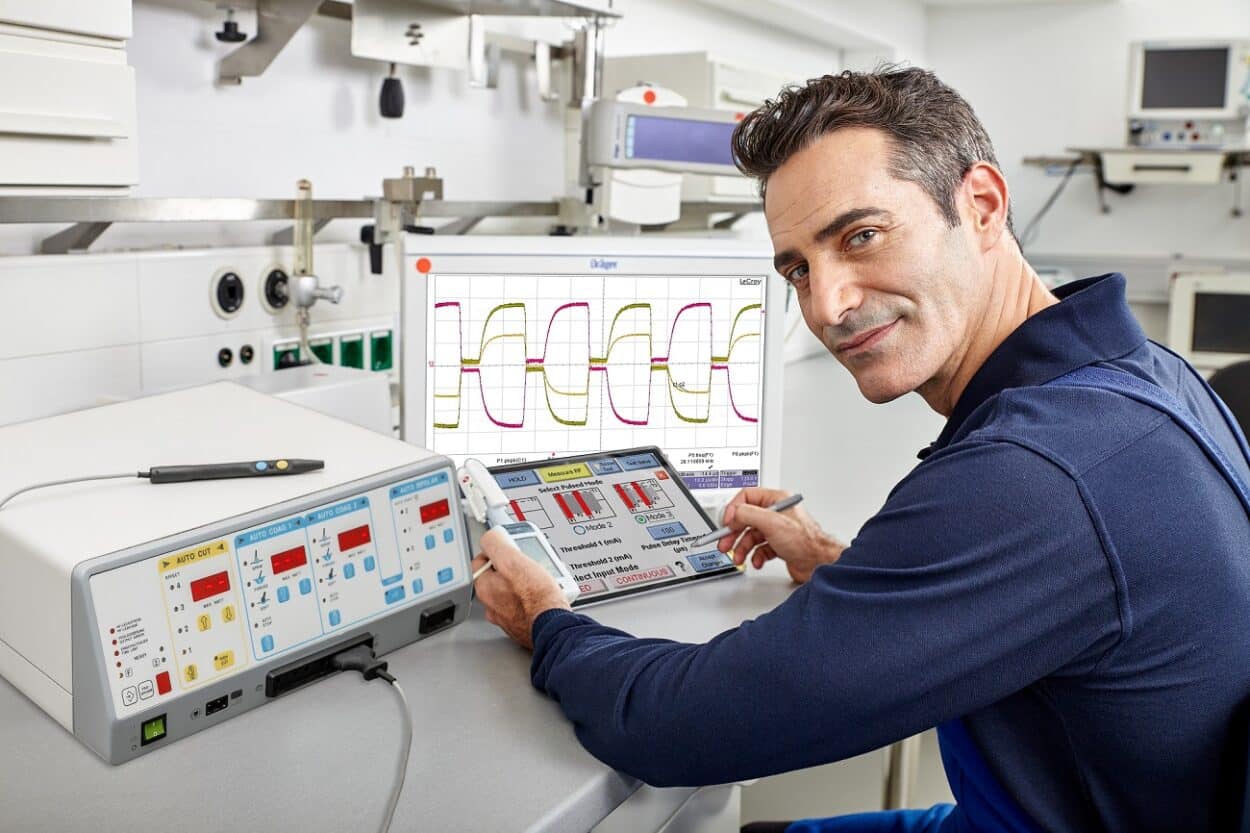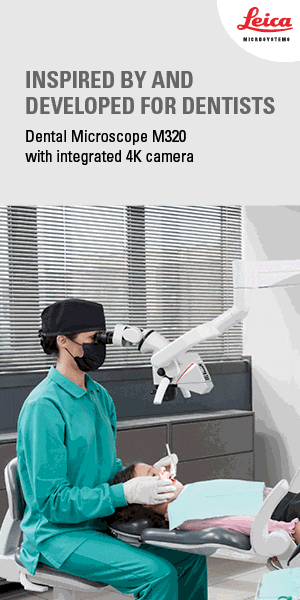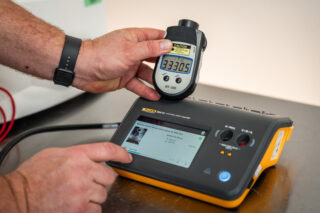Electrosurgery uses a high-frequency electric current applied to biological tissue as a means to cut, coagulate, desiccate or fulgurate. Electrosurgical devices are frequently used in surgery because they help prevent blood loss by sealing the tissue and blood vessels while cutting the tissue.
Sponsored by GOSSEN METRAWATT.
Electrosurgery can be used for tasks requiring both cutting and coagulation, to achieve the mass destruction of large volumes of tissue, for fine incision as required by the reconstructive microsurgeon or for incision of the subcutaneous tissue with hemostasis. There are many applications, from small units used in dermatology to remove skin lesions to more powerful units that can be used in procedures such as open heart surgery.
Cutting and coagulation are the two main methods used in electrosurgery. In cutting, a distinction is made between the blended cut and the pure cut. In both cases, electric current is passed through an active electrode, through the tissue and back through the neutral electrode to cut the tissue. With a blend setting, incision and coagulation can be performed simultaneously. In pure cut mode, the surgeon achieves a clean cut that is very similar to a cut made with a scalpel.
In order to deliver energy to the tissue, two ways are used in today’s ESUs (Electro Surgery Units): monopolar and bipolar. With the monopolar, the current is returned by a dispersive electrode (return electrode). This is usually placed on a part of the body that allows a larger contact area and therefore a higher current density, such as the thigh or buttocks. When using bipolar energy delivery, no return electrode is needed. The surgeon uses a tool similar in appearance to tweezers. Here, the current flows directly between two points, heating the tissue to achieve the desired effect.
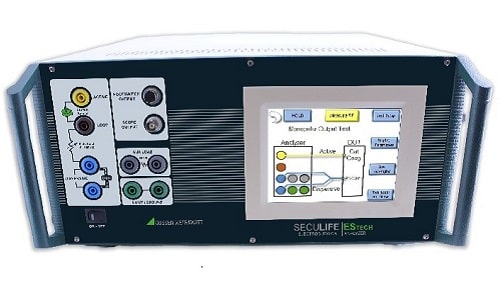
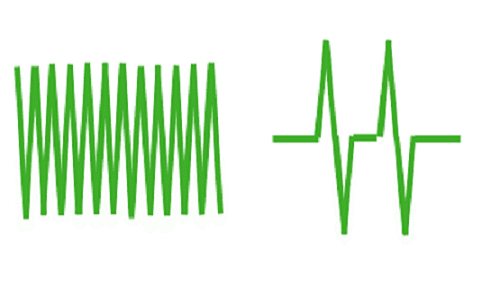
With its brand SECULIFE, GOSSEN METRAWATT, one of the market leaders in the field of measuring and testing technology, offers a full range of different products for testing medical devices in research, production and daily operation.
To ensure the safety of the user and patient, various tests have to be performed during preventive maintenance routines.
RF Leakage Current
The current on the conductive surfaces of the ESU during activation is measured. This is a critical parameter because it indicates dielectric breakdown at the power output of the ESU, which may lead to patient burns. IEC standard 60601-2-2 states that a maximum of 4.5 watts measured with a 200 Ohm inductive load must not be exceeded.
Power Output
The output power in monopolar or bipolar energy delivery and also using the different methods of cut and coagulation are measured with a load simulating human tissue.
REM (Return Electrode Monitor)
To avoid dangerous injuries to the patient due to malfunction of the SEM, different resistance values are used for testing and simulating.
Power Distribution
Load curves which represent the use of the device at multiple loads are measured and documented to ensure that the impedance sensing circuits are working correctly. Default values can be found in the manufacturer’s documents.
After the test has been completed and no defects have been found, the medical device is marked, e.g. with the corresponding test label.
Author:
Dirk Cordt
Marketing Manager International, Gossen Metrawatt GmbH
90446 Nürnberg, GERMANY
